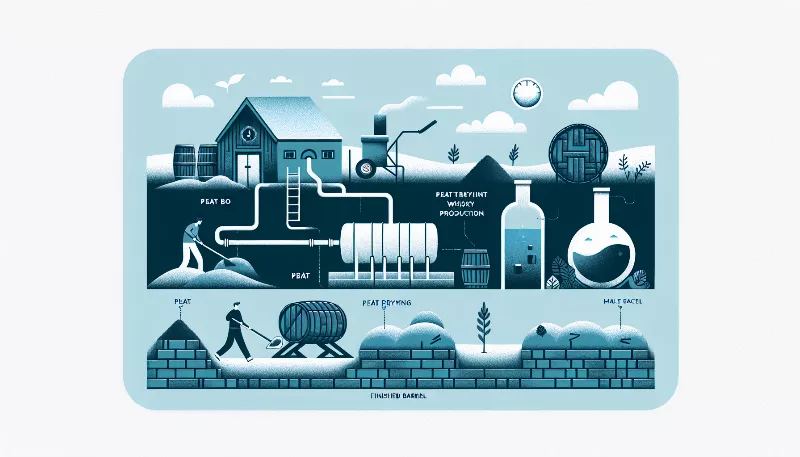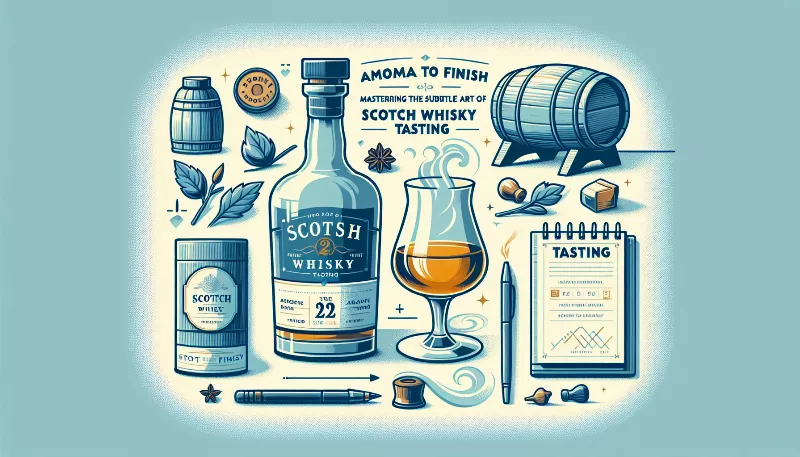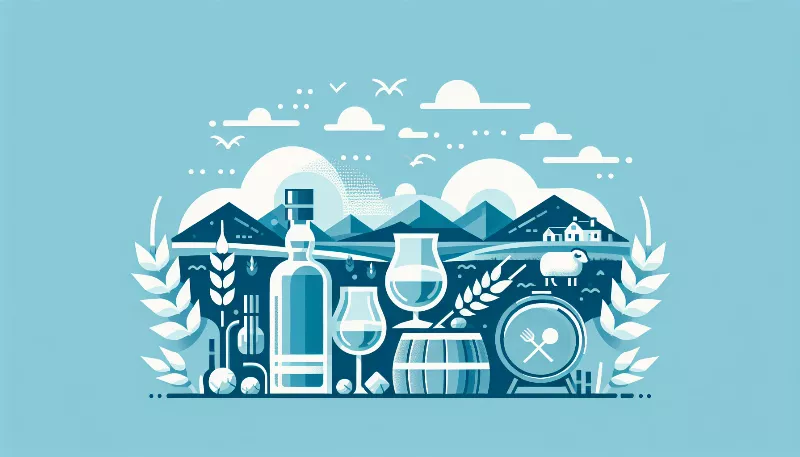What is the significance of peat in Scotch whisky production, and how is it used?
Discover the role of peat in crafting Scotch whisky's unique flavor. Learn how this ancient resource shapes the taste and tradition of your favorite dram.

The Mystical Moorlands: A Primer on Peat
Imagine the rugged highlands of Scotland, where the air is filled with the earthy scent of ancient bogs and the whisper of history. Here lies the heart of Scotch whisky's unique character—peat. Peat is partially decomposed plant material that has accumulated in water-saturated environments, such as bogs and moors, over thousands of years. This dense, carbon-rich substance is not just a slice of the Scottish landscape; it's a crucial ingredient that imparts a distinctive smoky flavor to Scotch whisky, making it revered by connoisseurs around the globe.
From Bog to Barrel: The Peat Harvesting Process
Harvesting peat is a tradition steeped in time. The process begins in the late spring and early summer when the top layer of the bog is removed to expose the peat beneath. It is then cut into slabs, known as 'peats,' and left to dry in the open air for several months. Once sufficiently dried, these peats are ready to play their pivotal role in whisky production. The labor-intensive nature of peat harvesting adds to the mystique and allure of Scotch whisky, connecting the spirit to the land and the hardy souls who work it.
Igniting Tradition: The Role of Peat in Malting
The magic of peat comes alive during the malting process. Malting is the first step in whisky production, where barley grains are soaked in water, allowed to germinate, and then dried to halt the process. It is during the drying phase that peat is used to impart its signature smokiness. The dried peats are lit, and the smoldering embers produce a dense, aromatic smoke. This smoke envelopes the damp barley, infusing it with the rich, earthy flavors that are synonymous with peated Scotch whisky.
A Spectrum of Smokiness: Peat's Influence on Flavor
Not all Scotch whiskies are created equal when it comes to peat. The amount of peat used, the duration of exposure, and the type of peat itself can greatly influence the final flavor profile of the whisky. From the lightly peated drams that offer a subtle whisper of smoke to the heavily peated varieties that boast a robust and intense peaty punch, there is a spectrum of smokiness to explore. Each distillery has its own secrets and techniques, contributing to the vast array of peated Scotch whiskies available to enthusiasts.
Conserving the Peatlands: Sustainability in Whisky Production
As we celebrate the role of peat in Scotch whisky production, it's also essential to acknowledge the environmental considerations. Peatlands are important ecosystems and carbon sinks, playing a vital role in combating climate change. The Scotch whisky industry is increasingly aware of this and is taking steps to ensure sustainable peat harvesting practices. By balancing tradition with conservation, the industry aims to protect these precious landscapes for future generations while continuing to produce the beloved peaty Scotch whiskies.
Conclusion: A Toast to Peat's Enduring Legacy
In the world of spirits, peat is more than just a fuel; it's a storyteller, narrating a tale of heritage, terroir, and craftsmanship through every smoky sip of Scotch whisky. Its significance in Scotch whisky production is immeasurable, offering a connection to the land and a depth of flavor that is unmatched. So, the next time you raise a glass of peated Scotch, remember the ancient bogs, the skilled hands that harvested the peat, and the timeless traditions that continue to shape this extraordinary spirit.










